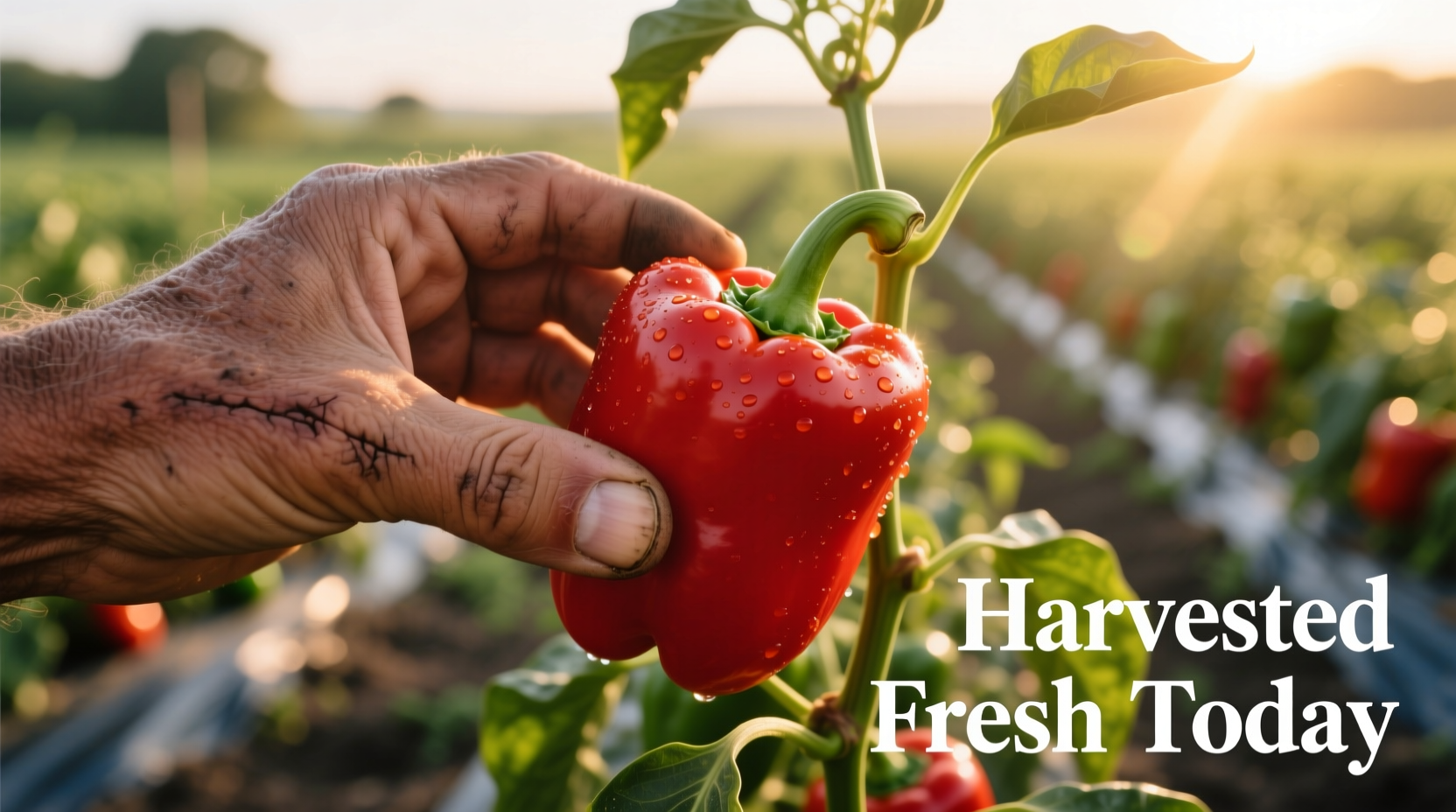Knowing exactly when to pick bell peppers transforms your garden harvest from merely edible to exceptionally flavorful. Whether you're growing peppers in containers on your balcony or managing a backyard garden plot, harvesting at the perfect moment ensures peak sweetness, texture, and nutritional value. This guide reveals the precise visual and tactile indicators that signal your bell peppers have reached their flavor potential.
Why Timing Your Bell Pepper Harvest Matters
Harvest timing directly impacts three critical aspects of your bell peppers: flavor complexity, nutritional content, and plant productivity. University agricultural studies confirm that peppers left to fully ripen on the plant develop up to 30% more vitamin C and significantly higher carotenoid levels compared to early-harvested green peppers. The flavor transformation is equally dramatic—what starts as a slightly bitter green pepper evolves into a sweet, complex profile as it matures through yellow and orange stages to deep red.
Commercial growers and home gardeners alike face the same fundamental choice: harvest early for the traditional green pepper taste or wait for the sweeter, more nutrient-dense colored varieties. Understanding this ripening continuum puts you in control of your harvest's flavor profile.
Visual Indicators of Perfect Ripeness
Your eyes provide the first reliable signals that bell peppers are ready for harvest. Look for these specific visual characteristics:
| Color Stage | Visual Indicators | Flavor Profile | Days from Transplant |
|---|---|---|---|
| Green (immature) | Glossy surface, firm texture, full size | Grassy, slightly bitter | 60-70 days |
| Yellow/Orange | Bright, uniform color, slight softening | Sweet with citrus notes | 75-85 days |
| Red (fully ripe) | Deep, uniform red, slightly softer | Complex sweetness, fruity notes | 85-95+ days |
According to research from the University of California Agriculture and Natural Resources, the glossiness of the pepper's skin provides a more reliable ripeness indicator than color alone. As peppers approach peak ripeness, their surface develops a distinctive shiny appearance. When this gloss begins to fade, it signals that the pepper has passed its optimal harvest window and will soon become overripe.
Proper Harvesting Technique for Healthy Plants
How you pick bell peppers matters as much as when you pick them. Never pull peppers from the plant, as this can damage stems and reduce future yields. Instead:
- Use sharp pruning shears or a clean knife
- Cut the stem about 1/4 inch above the pepper's shoulder
- Avoid touching the fruit with dirty hands to prevent spoilage
- Harvest in the morning when temperatures are cooler
Cornell University's horticulture department emphasizes that proper harvesting technique prevents plant stress and encourages continued production. "Plants respond to clean cuts by immediately directing energy toward new flower and fruit development," explains their extension materials. This simple practice can extend your harvest season by several weeks.

What Happens If You Pick Too Early or Too Late
Mistiming your harvest affects both immediate quality and future production:
Picking Too Early
Harvesting bell peppers before they reach full size results in underdeveloped flavor and texture. These prematurely picked peppers often have thicker walls but lack the sugar development that creates that characteristic bell pepper sweetness. From a plant perspective, removing peppers too early can actually reduce total season yield by signaling the plant to slow production.
Picking Too Late
Leaving peppers on the plant beyond their prime leads to several issues:
- Loss of firmness and increased susceptibility to bruising
- Development of soft spots and wrinkled skin
- Reduced plant energy for producing new flowers
- Potential cracking from overripeness
Research from the USDA Agricultural Research Service shows that overripe peppers experience accelerated nutrient degradation, particularly in vitamin C content, which begins declining within 48 hours of passing peak ripeness.
Post-Harvest Care for Maximum Freshness
What you do after picking determines how long your bell peppers maintain their quality:
- Refrigerate immediately in the crisper drawer (ideal temperature: 45-50°F)
- Store in perforated plastic bags to maintain humidity
- Use within 10-14 days for best quality
- Never wash before storage—moisture accelerates spoilage
Unlike tomatoes, bell peppers don't continue significant ripening after harvest. While they may soften slightly in storage, the major flavor and color development occurs exclusively on the plant. This makes timing your harvest correctly even more critical for achieving your desired flavor profile.
Season Extension Strategies
To maximize your bell pepper harvest throughout the growing season:
- Harvest regularly to encourage continuous production
- Pick one pepper from each cluster first to stimulate growth of remaining fruits
- In cooler climates, use row covers to extend the growing season
- Monitor plants daily during peak season as ripening accelerates
Professional growers recommend harvesting green peppers slightly early (when they reach about 75% of expected size) if you're growing multiple plants. This approach ensures a steady supply throughout the season rather than one large harvest that overwhelms your storage capacity.











 浙公网安备
33010002000092号
浙公网安备
33010002000092号 浙B2-20120091-4
浙B2-20120091-4